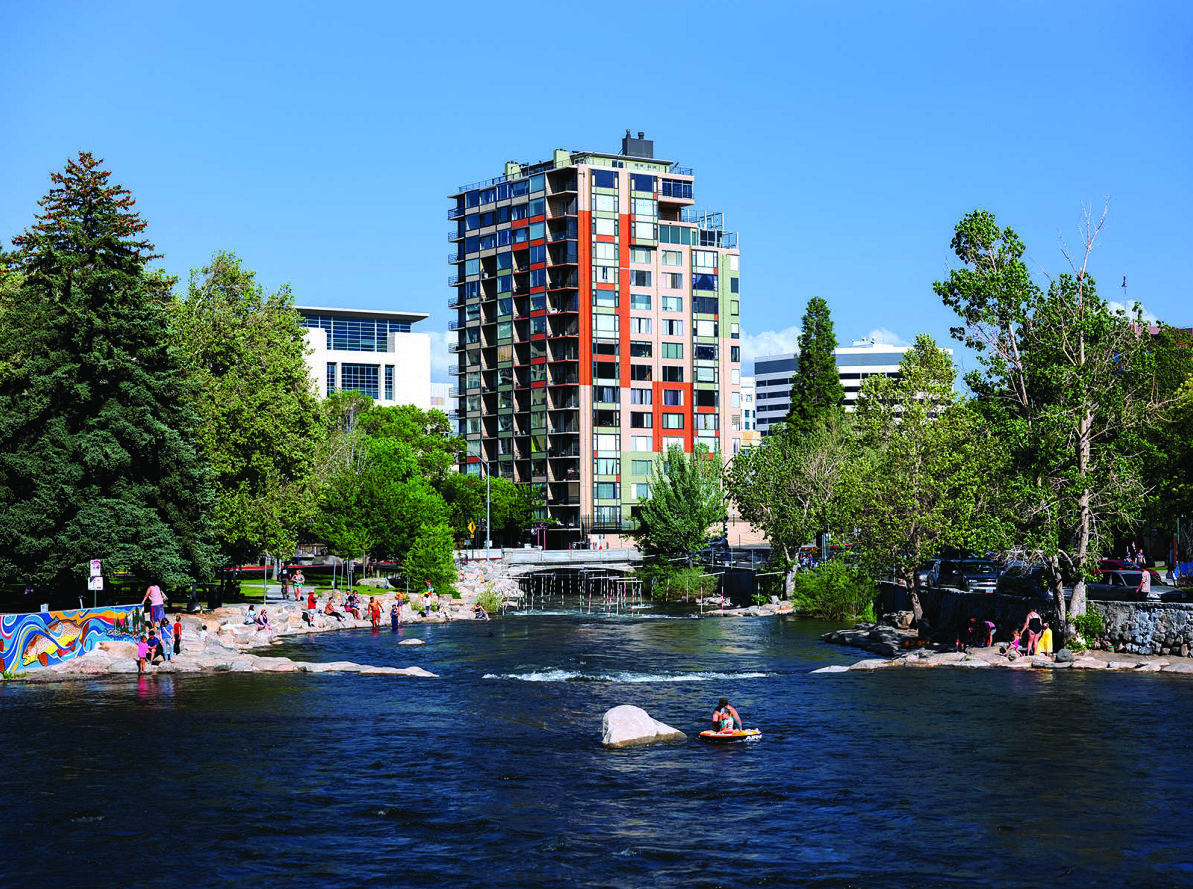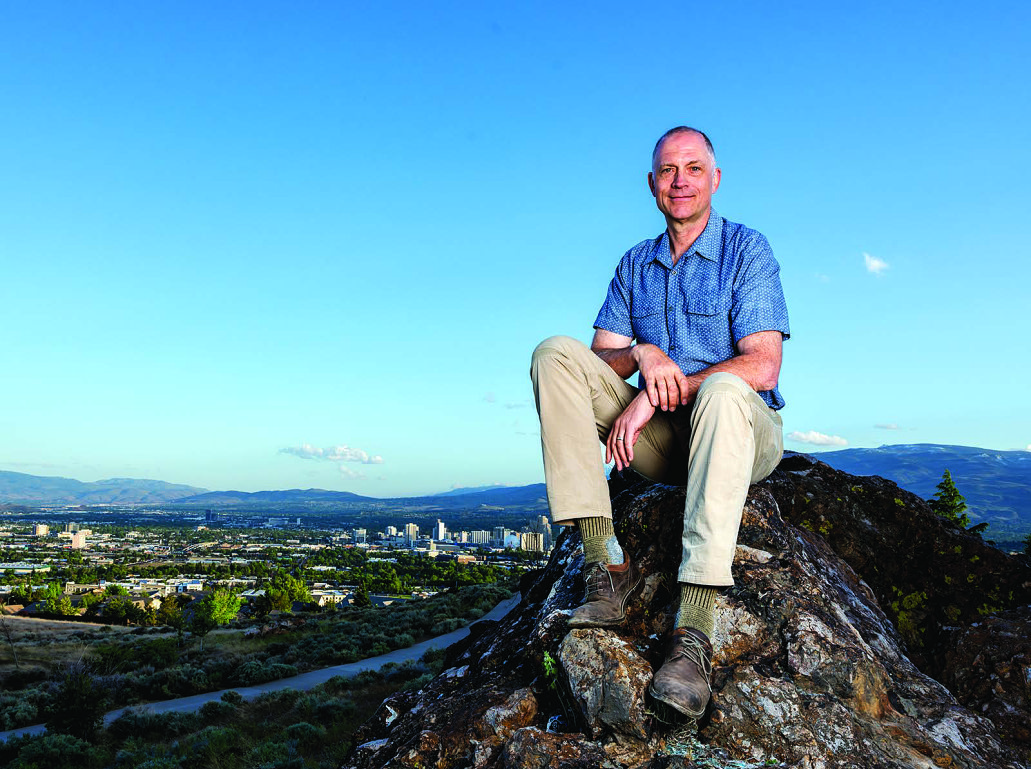

For Brian Beffort, the sustainability manager of Washoe County, the federal government’s commitment to fighting climate change has been basically a bonanza. He’s been on the job for 15 months and already the county, which includes Reno, is expecting money to start flowing from a $156 million statewide grant he helped clench that can pay for rooftop solar panels for low-income residents. Other federal programs will fund urban reforesting and map Reno’s hottest neighborhoods. Beffort is also waiting to hear whether the county will receive a multimillion-dollar federal grant to reduce air pollution. So much money is being offered, “it’s hard to keep up,” he said. “This is a great time to be in sustainability and climate action.”
The Biden administration’s push to fight climate change has sprinkled billions of dollars across America for major projects, such as building new transmission lines for electric power, and for smaller ones, like planting trees. The centerpiece of the president’s effort, the Inflation Reduction Act, is injecting more than $370 billion into programs aimed at helping the United States cut greenhouse gas emissions by an estimated 40% below 2005 levels by the end of this decade.
But in this election year, officials in Nevada and beyond who are facing new threats from climate change are wondering whether the flow of assistance will last. It’s unclear how much the federal funding for climate projects is lifting support for President Joe Biden. In Nevada, a battleground state, Biden’s presumed Republican rival, former President Donald Trump, holds a significant lead in polls. Trump also leads in Arizona and Georgia, other election battlegrounds where Biden administration climate policies have helped bring billions of dollars in new investments.
Last year, Gov. Joe Lombardo decided that his state would pull out of a multistate coalition of governors committed to policies aligned with the Paris climate accord, the global agreement to reduce emissions. Lombardo, a Republican, said Nevada’s energy policies required a balance of fossil fuels and renewable energy; previously, the state’s policy had been to move away from fossil fuels.
Despite that reversal, the state and individual counties have been collecting millions of dollars of federal funding to fight climate change. “Under the current administration, we will continue to seek potential funding opportunities that benefit not only Washoe County but the entire state,” Dwayne McClinton, director of the Nevada Governor’s Office of Energy, said in an emailed statement.
“The Governor’s Office of Energy remains focused on delivering sustainable, reliable, and affordable energy sources and advocating for the maintenance of a diverse energy portfolio.” The money is welcome to Reno officials. Recently, Climate Central, an independent research group, named Reno the fastest-warming city in America, saying its annual average temperature rose 7 degrees between 1970 and 2023. The second-fastest-warming city is also in Nevada: Las Vegas.
But among many local officials, fear is rising that money to relieve what could be a deadly trend of rising temperatures may be fleeting—depending on what happens in November’s presidential election. When Trump was in office, he weakened climate and conservation rules (which Biden then restored). Trump has railed against Biden’s energy and environmental agenda and has promised to eliminate rules aimed at accelerating the nation’s transition to electric vehicles.
The former president has also been courting oil executives for campaign donations, promising that if he’s elected he will roll back environmental rules that he has said hurt their industry. Other Republicans have criticized Biden’s spending on climate-related issues as wasteful, unchecked, and ripe for fraud. “It sure seems that if Biden does not win this, the money could dry up quickly,” said Beffort, whose position is nonpartisan and who emphasized that his bosses on the County Commission are both Republicans and Democrats.
“We know that there are just pockets of money sitting there to help and assist families. But the information is not getting out there.”
Jose Rivera, spokesman for Make the Road Nevada, which works on immigration, housing, economic justice and other issues
Rising temperatures and extreme heat are becoming an urgent problem nationwide, both in cities struggling to find money to keep cooling centers open 24 hours and in rural communities where spread-out populations make it difficult to offer uniform relief. Some cities, as well as the state of Arizona, have appointed chief heat officers. In Congress, Rep. Sylvia Garcia, D-Texas, is circulating a proposal to fund a dedicated heat officer in every state.
Reno is one of the nation’s many cities that suffer from an urban heat-island effect. Its miles of heat-absorbing asphalt, buildings, and homes make it warmer than surrounding rural areas. While cities like Phoenix had a stretch of record-breaking temperatures in the 100s last summer and failed to cool off significantly at night, Reno benefits from its 4,500-foot elevation that gives way to cooler evenings. But even Reno’s overnight temperature is getting warmer, scientists say, posing new threats for the city.
“The science is clear: We’re experiencing warming,” said Thomas Albright, Nevada’s interim state climatologist, who has been part of groups that have received federal grants to measure heat in Nevada. Reno’s tree cover is sparse. Downtown in particular heats up in the summer, and neighborhoods to the north and east of town, as well as low-income areas near the airport, have significantly less tree cover than others.
The Truckee River, which winds through Reno and nearby Sparks, offers cooler temperatures and shady spots that have become a refuge for homeless people. Local officials recently cleared encampments there and passed a measure that bans overnight camping along the banks. People who advocate for the homeless say they fear that those evicted will settle in along treeless railroad tracks in Reno, which could lead to heat-related health problems during summer months.
Reno also faces air quality issues both from nearby wildfires and from more traffic in the growing area that has lured new residents to work at Tesla’s Gigafactory and elsewhere. The region had rainy, snowy weather at the start of the year, yet faces risks from climate change-driven extreme weather of all kinds.
Making sure money trickles down to vulnerable residents is a challenge, said Jose Rivera, a spokesperson for Make the Road Nevada, which works on immigration, housing, economic justice, and other issues. Language has been a barrier to programs that help low-income residents lower energy bills or convert gas stoves to electric ones.
“We know that there are just pockets of money sitting there to help and assist families,” he said, “but the information is not getting out there.” In Washoe County, federal funds are being used or sought to add electric-vehicle charging stations and to shore up window insulation to keep out hot air. Federal dollars will help replace natural gas boilers with electric heat pumps and will pay for the installation of energy-efficient LED lights. The money will also help replace gas and diesel fleets of cars and buses with electric vehicles.
Another grant offers resources from the National Oceanic and Atmospheric Administration and other federal agencies to identify the hottest areas in the county. That information would then be used to help identify areas most in need of weatherization programs and new trees. Albright, an associate professor at UNR, said federal funding for his research on climate and other issues has spanned presidential administrations. He said he was optimistic that funding would remain available for issues that affect everyone.
Still, university officials are taking advantage of available funding while they can. Phoebe Judge, the university’s sustainability manager, recently filed a grant proposal and is preparing another that could provide the school with a total of $27 million for reducing the effects of climate change on campus, one of the city’s large emitters of greenhouse gases. “There’s a little bit of a mad dash to get this funding applied for and to get the funding by the end of the year,” she said.

